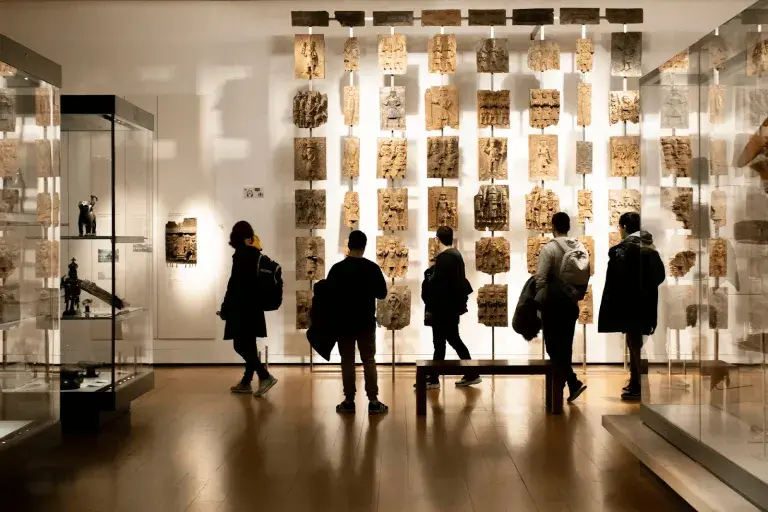Rothschilds’ portrait of young Elizabethan adventurer falsely accused of being part of the Gunpowder Plot comes to aucti

SALISBURY.- He was created a count by the Holy Roman Emperor for heroics against the Turks, thrown in prison by Elizabeth I, disinherited by his jealous father and unfairly accused by Guy Fawkes of being part of the Gunpowder Plot.
Now the striking portrait of the young Elizabethan adventurer Thomas Arundell (1560-1839) comes to auction in the Old Masters, British & European Paintings sale at Woolley & Wallis in Salisbury on September 8.
One of 18 paintings consigned to the sale by the Rothschild family, this marks the culmination of the dispersal of part of the collection from Exbury House at a series of auctions in Salisbury over recent months that has raised hundreds of thousands of pounds.
Pictured at the age of 20 in 1580, Arundell was the eldest son of Sir Matthew Arundell of Wardour Castle in Wiltshire and was first imprisoned at the time that this portrait was painted for his fervent Catholicism.
Having secured financial backing from his father and the recommendation of Queen Elizabeth I, in 1595 Thomas set off to serve the Holy Roman Emperor in Hungary during The Long War against the Ottoman Empire, storming the breach at Gran and replacing the Turkish standard with the Imperial Eagle. This success led the Emperor, Rudolf II, to make him a Count of the Holy Roman Empire.
All went well until Thomas decided to return to England late in 1595, against his father’s wishes, only to be shipwrecked off the coast of Suffolk and losing all his possessions. His fortunes fell further when he outraged both the Queen and his father by failing to renounce his foreign title, a title that gave him superior rank to his father who disinherited him as a result. The Queen jailed him in the Fleet prison where he remained until 1597 when he was released but barred from court.
Even on his release he found no peace, almost immediately being arrested once more on suspicion of Catholic subversion, but was released into his unsympathetic father’s custody after no evidence could be found against him.
The following year his father died and he succeeded to the title and becoming Baron Arundell of Wardour in 1605 just months before Fawkes accused him of being a conspirator in the Gunpowder Plot.
The portrait is by George Gower (c.1540-96), who became Serjeant painter to the Queen a year after he painted it.
The estimate at Woolley & Wallis is £10,000-15,000.
Other Rothschild highlights among the paintings include a portrait of Monsieur Aubert, General Director of the Bridges and Roads of France, a 53 x 40½in three-quarter-length oil on canvas laid on panel by Nicolas de Largillière (1656-1746), estimated at £12,000-18,000
Sunset over a riverside village, a signed 30¼ x 39¼in oil on canvas by Aert van der Neer (c.1603-77), is pitched at £10,000-15,000, while Sir William Beechey’s RA (1753-1839) 50 x 40in oil on canvas portrait of a lady, now identified as Anne, Duchess of Cumberland (1743-1808), carries hopes of £6,000-8,000.
The Rothschilds at Exbury House
Exbury has been a seat of the Rothschilds since 1919 and the consignment of 85 lots is the result of a decision to re-order the house.
Previously the estate of the historian William Mitford and then Lord Forster, a one-time Governor-General of Australia, by the time Lionel Nathan de Rothschild (1882-1942) acquired Exbury, the 18th century house was all but derelict, and he had it remodelled in the late 1920s.
It was the gardens that were Lionel’s true passion, as their unique micro-climate at the south eastern edge of the New Forest in Hampshire rendered them particularly suitable for the planting of rare rhododendrons, camelias and azaleas from Asia. Here he created an inimitable garden, employing 250 men to clear out the woodland so that it could be laid out, while installing an intricate irrigation system involving 22 miles of underground piping.
If the garden was a triumph, the house was more unfortunate. Barely a decade after Lionel had refashioned it to his liking, war broke out. Just over two years later he died and four months after that the Admiralty requisitioned the house, giving the family no more than 48 hours to clear their possessions and themselves out.
The legacy of its military occupation throughout the war meant that both house and gardens had to be restored once more, this time under the direction of Lionel’s son, Edmund (1916-2009), who opened the gardens to the public in 1955.
Edmund was also an art collector, but it is to another Rothschild that a number of the notable highlights consigned to Woolley & Wallis may be attributed. These heirlooms from Exbury entered the family via Alfred de Rothschild (1842-1918), a director of the Bank of England by the age of 26 and Lionel’s uncle. In 1879 on the death of his father, Alfred had inherited the 1,400-acre Halton estate in Buckinghamshire, where he promptly built a sumptuous house in the style of a French chateau, and it was from here that these choice lots emanate.
Woolley & Wallis’s former chairman Paul Viney, who remains an active part of the firm as a director, has been overseeing negotiations for the Exbury House consignment for the past three years.
“For over 200 years the Rothschilds have been renowned as great collectors. The provenance of the lots we are selling, many of which have been through several generations of the family, can only enhance their interest,” he said.












